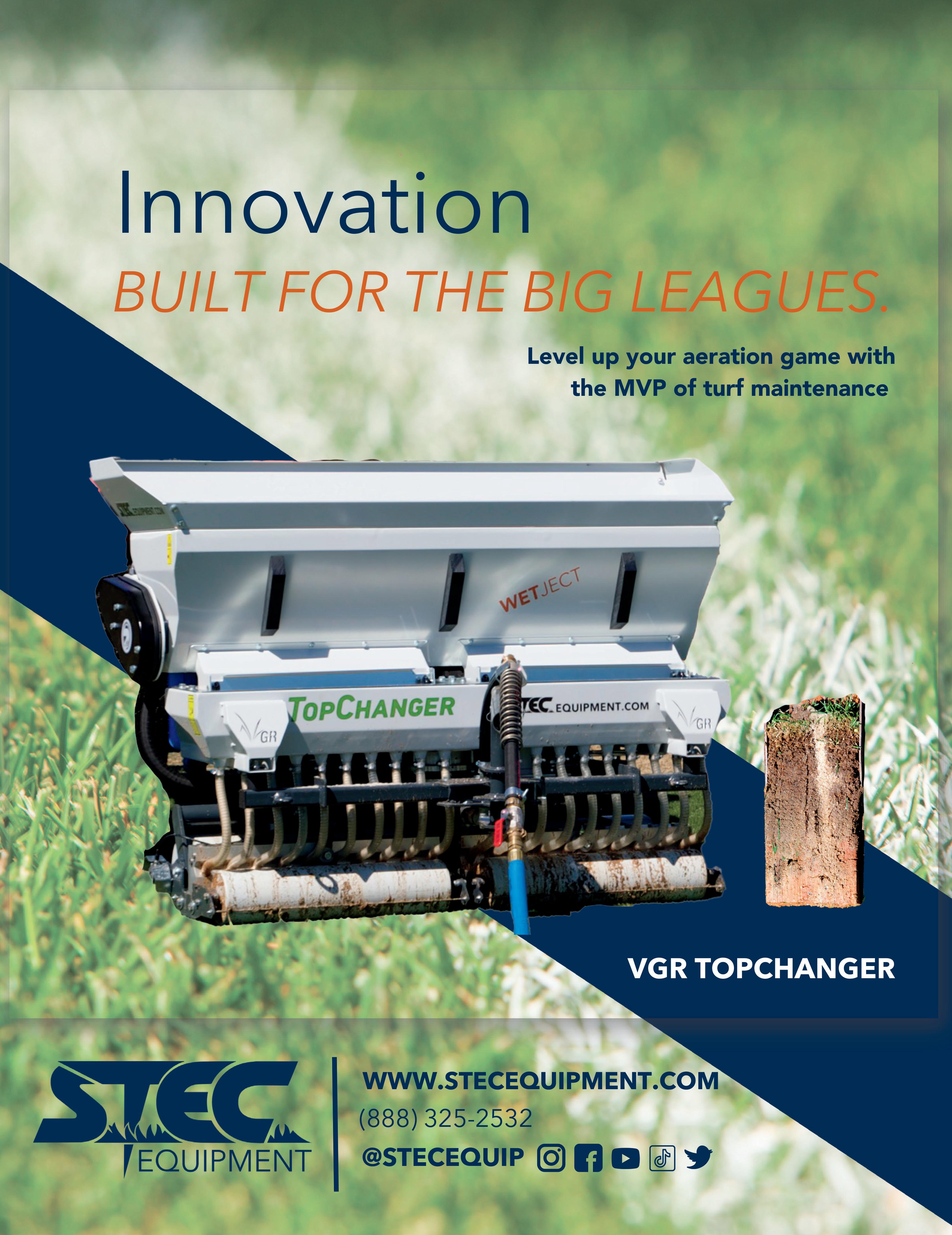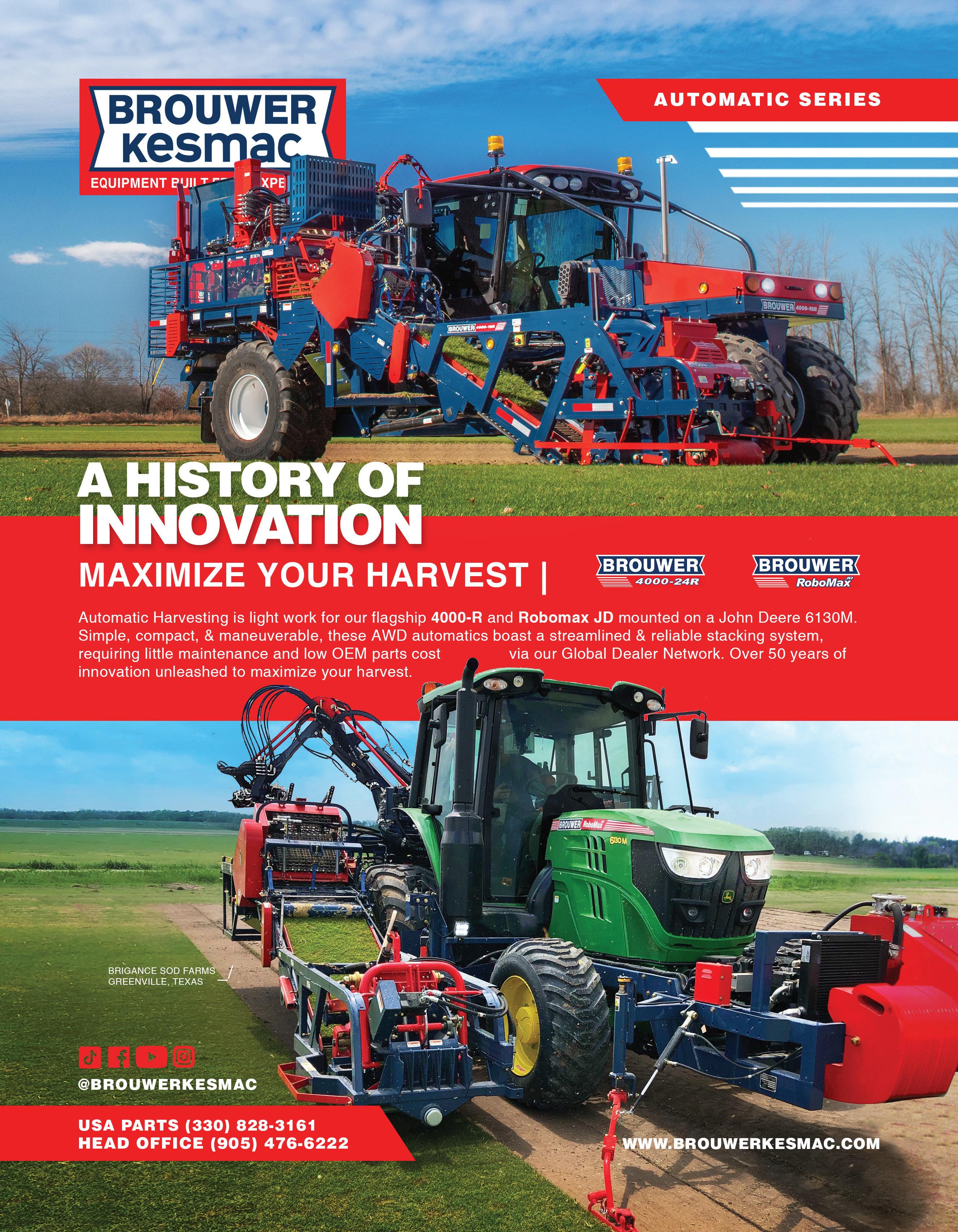




For nearly 30 years, POLYON® controlled-release fertilizer has been used with confidence for its predictable performance and labor-saving benefits. Industry proven, trusted by sports turf managers everywhere. If your goal is safe, durable and beautifully playable turf – season in and season out – no fertilizer feeds your success like POLYON® fertilizer. Choose POLYON® fertilizer and you will get guaranteed results backed by our POLYON® Guarantee.

For more information, visit www.harrells.com/polyon or contact your Territory Manager today!
CHUCK BRAMHALL CAPE COD cbramhall@harrells.com
(508) 400-0600
JIM COHEN EASTERN MA & ME jcohen@harrells.com
(978) 337-0222
MIKE DUKETTE CT mdukette@harrells.com
(860) 930-8888
JIM FAVREAU MASSACHUSETTS jfavreau@harrells.com
(978) 227-2785
MIKE KROIAN RI, MA mkroian@harrells.com
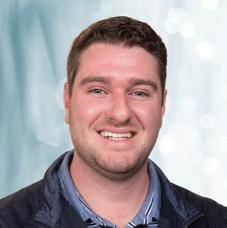
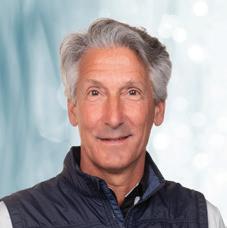
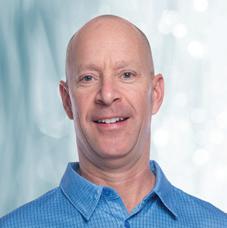
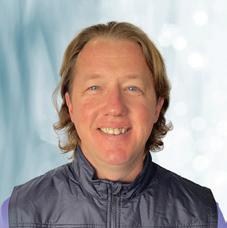
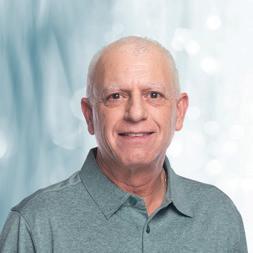

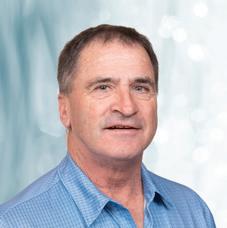
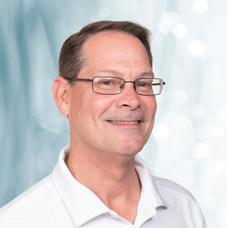
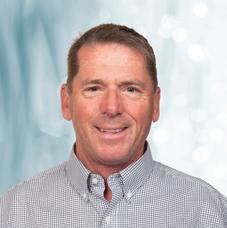
(401) 265-5353
TOM HOFFER NORTHEAST thoffer@Harrells.com
(401) 871-2916
JIM WIERZBICKI CT, RI
jwierzbicki@harrells.com
(860) 424-7250
KENT LEMME WESTERN MASS klemme@harrells.com
(413) 281-8087
CONNOR CINQUE NH, ME ccinque@harrells.com
(603) 930-1861
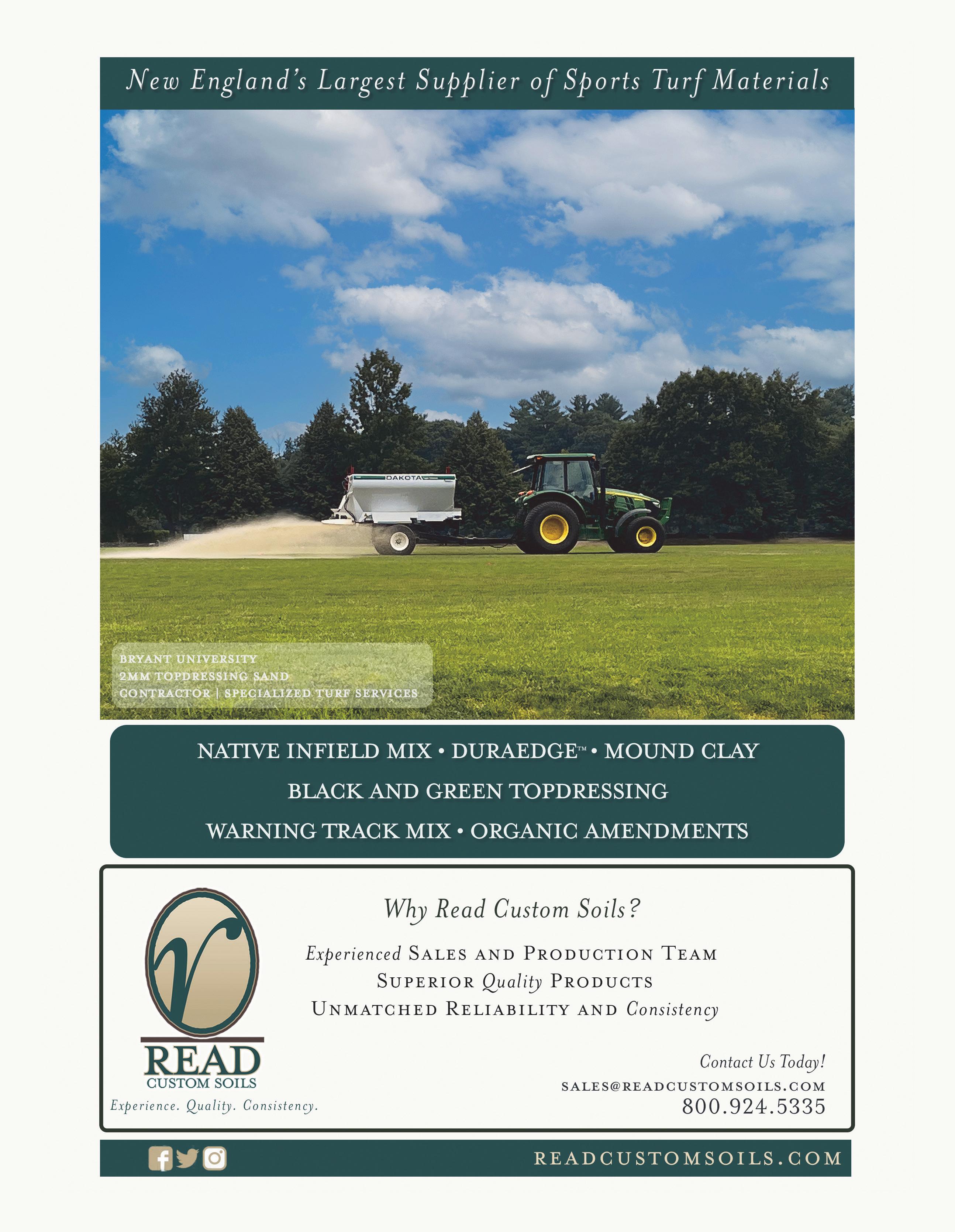
10 Awards Meeting and Lunch
14 Ed Olsen
16 Synthetic Turf: Simplifying Modern Day Synthetic Turf Maintenance
22 Professional Development: Hiring for Talent
18 BMP Case Study: Challenges with Synthetic Pesticide and Fertilizer Bans
20 Newly Released BMPs for New England
On the cover: Memorial Field in Needham, MA. Ed Olsen says, “This photo represents a busy day of core aeration and core harvesting on a beautiful Fall day after a long baseball season. Edging the skin and prepping the surface for another season!”
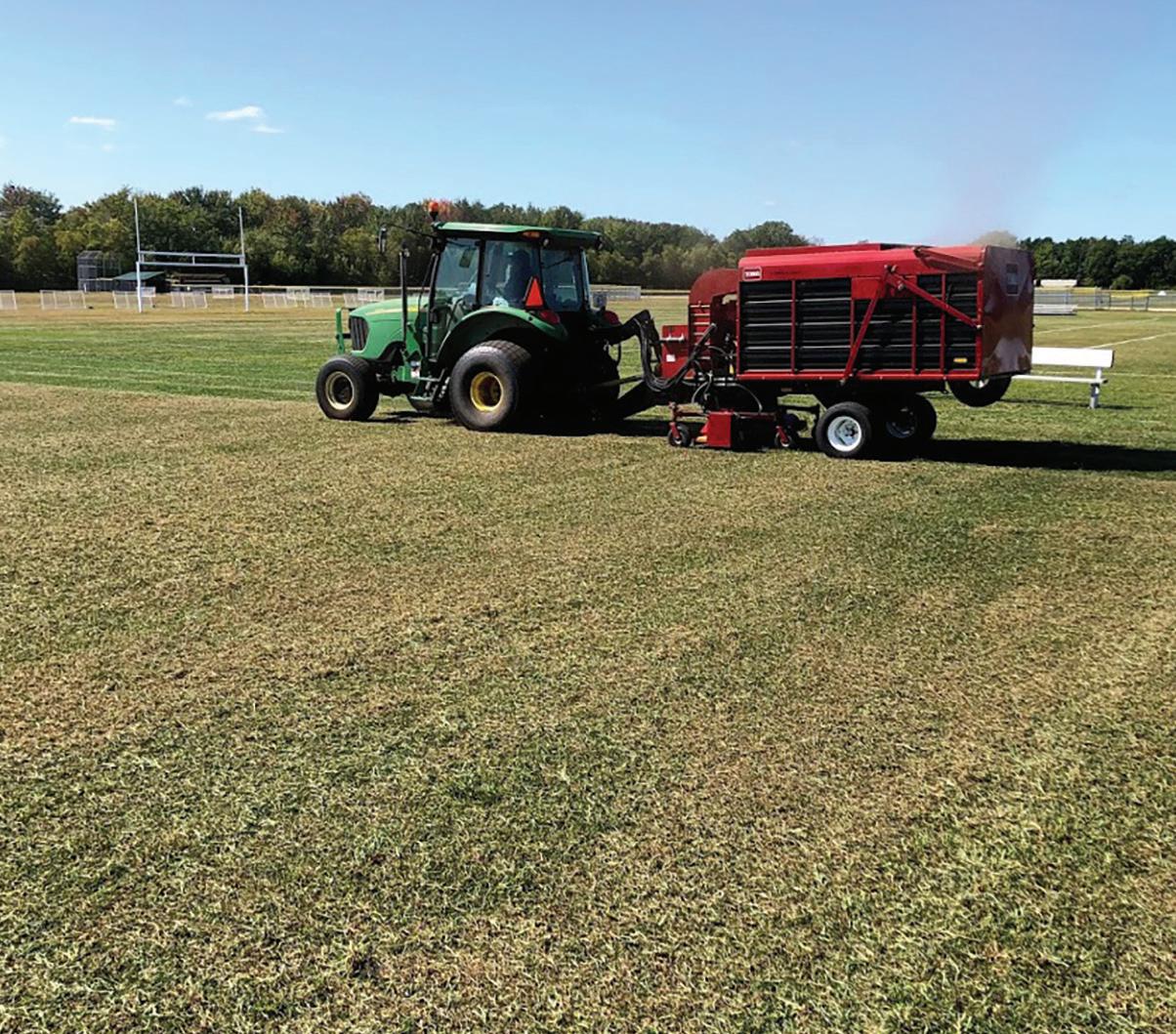
6 President’s Message
8 NESTMA News
12 Index of Advertisers
Find this issue, Podcasts, Events and More: TheTurfZone.com
Advancing professionalism in sports turf management and athletic field safety through education, research, and scholarships.
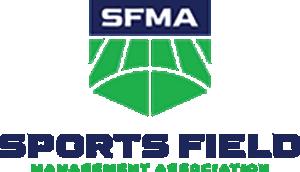
The official publication of the New England Sports Turf Managers Association (NESTMA), the New England Blade is dedicated to educating, advising, and informing members of the profession and furthering the goals of the Association. The New England Blade carries news and features related to the sports turf management profession. Publisher is not responsible for unsolicited material and reserves the right to edit any article or advertisement submitted for publication and to refuse advertising not in keeping with the goals of the Association. Publisher assumes no responsibility for the validity of claims in connection with items appearing in the New England Blade . Mention of a commercial product does not imply endorsement by the New England Blade, NESTMA, or Leading Edge Communications, or preference over similar products not mentioned. The New England Blade is published quarterly. Subscriptions are complimentary to members of NESTMA. Presorted standard postage is paid at Jefferson City, MO. Printed in the U.S.A. Advertising: For display and classified advertising rates and insertions, please contact Leading Edge Communications, LLC, 206 Bridge Street, Suite 200, Franklin, TN 37064, (615) 790-3718, Fax (615) 794-4524.
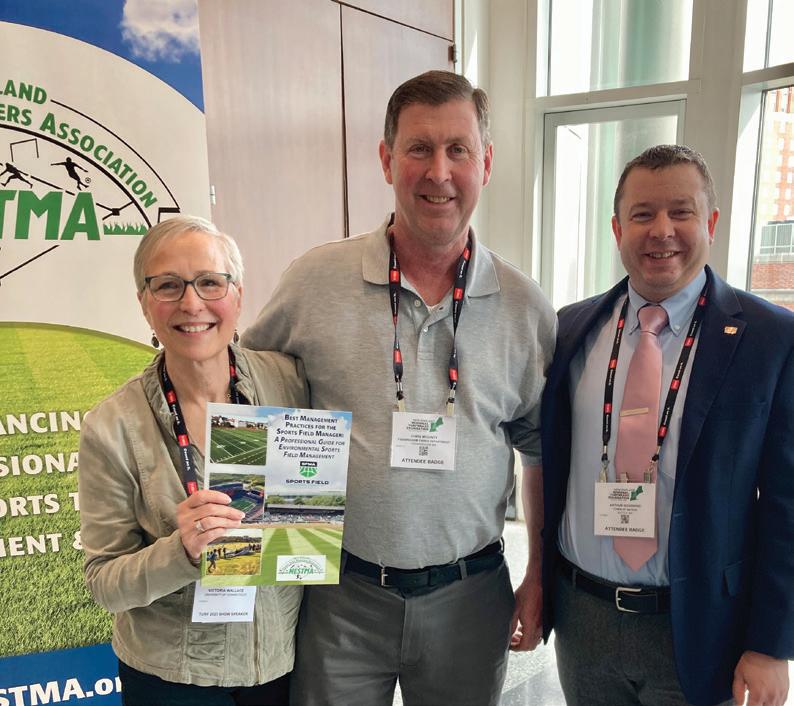
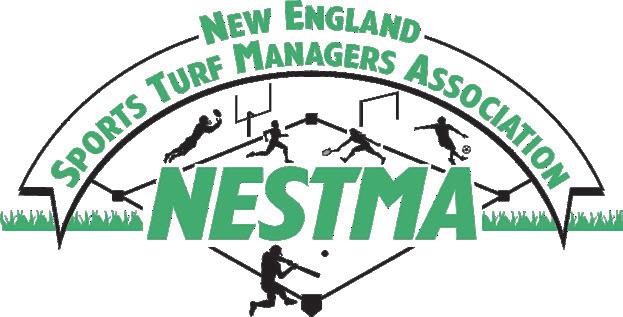
Officers President
Chris McGinty
Framingham Parks Department
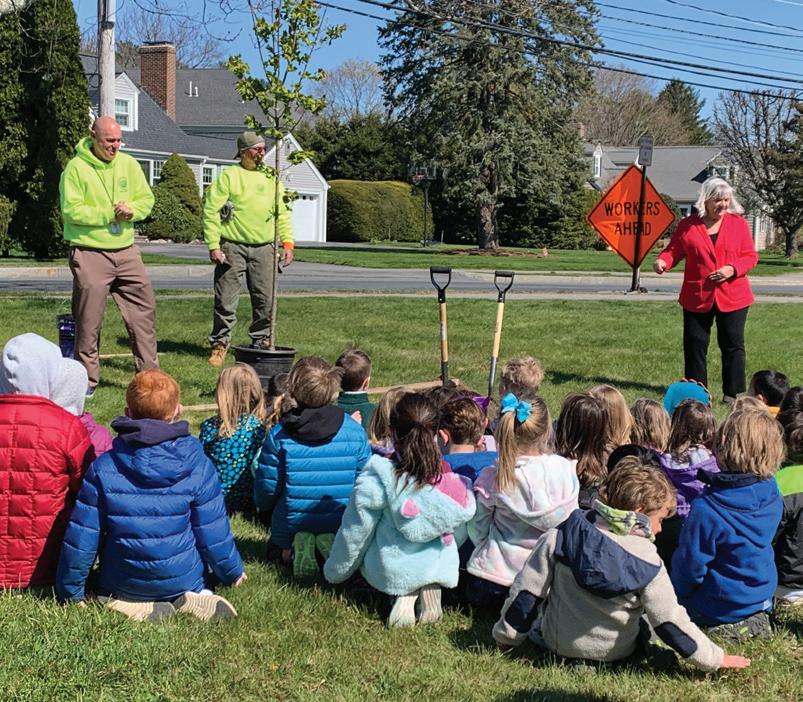
Framingham, MA
President Elect
Art Goodhind Town of Natick Natick, MA
Treasurer
Andrew Carlisle, CGM Worcester Technical High School Worcester, MA
Past President
Ben Polimer
Town of Weston Weston, MA
Directors
Tom Barry, CSFM
Greens Farms Academy Greens Farms, CT
Ryan Bjorn
Gillette Stadium
Foxboro, MA
Brendon Connor College of the Holy Cross
Worcester, MA
Adam Ferrucci
Read Custom Soils
Wareham, MA
Ian Lacy
Tom Irwin Advisors, Inc.
Burlington, MA
Scott Lagana Turf Products Corp.
Holden, MA
Official Chapter
Board of Trustees
Kim Britton
Saint Anselm College Manchester, NH
John Cunniff
Walpole, MA
Victoria Wallace University of Connecticut Storrs, CT
Management Team
Virginia Wood, Executive Director
Peggy Benjamin Kristen Dreyer
Charissa Sharkey
NESTMA Headquarters
67 West Street Medfield, MA 02052
(508) 653-1241
NESTMA.org
NESTMAinfo@gmail.com
Technical Editor
Victoria Wallace
University of Connecticut Storrs, CT

When I look at NESTMA’s membership ranks, I see an impressive group of professionals at the top of their game. From world-class stadiums to renowned institutions of higher learning, from prestigious prep schools to beloved community fields and recreational parks, our members are stewards of significant athletic fields and green spaces in communities across New England.
NESTMA members are well-educated, successful individuals with skill sets that demonstrate a high level of expertise, environmental sensitivity, and leadership. As an association, our ongoing objective is to offer programs and services instrumental to the growth and success of these professionals.
Publication of the new BMPs for New England and its companion webinar; sharing practical advice on managing operational budgets and decision-maker expectations through our “Budget Talk” webinar; and honoring top professionals at our Awards Meeting earlier this year are all great examples of how NESTMA is helping to advance professionalism.
NESTMA members are industry leaders who are constantly engaged in learning and improving themselves, their crews, and their facilities. Many have earned valued credentials such as Certified Sports Field Manager and Certified Ground Manager, as well as recognition for their facilities like SFMA’s Environmental Facility Certification. All these members are happy to share their experiences and help you do the same, all you need to do is ask.
“All boats rise with the tide,” and NESTMA stands ready to provide the leadership, content, and support you need to continue to advance in the sports turf profession.
Chris McGinty NESTMA President
Activitas – activitas.com
Arborjet – arborjet.com
Autmow – autmow.com
Covermaster – covermaster.com
Cub Cadet PRO Series – cubcadet.com
Finch Turf – finchinc.com
Five Star Golf Cars and Utility Vehicles – fivestargolfcars.com
Harrell’s LLC – www.harrells.com
Harts Turf Pro – hartsturfpro.com
Helena Agri Enterprises – helenaagri.com
Tom Irwin – tomirwin.com

MTE Equipment – mte.us.com
PJC Organic – www.pjcorganic.com
Precision Laboratories – twilliams@precisionlab.com
Progressive Turf Equipment – www.progressiveturfequip.com
R. A. D. Sports – radsports.com
Read Custom Soils – readcustomsoils.com
RePlay Maintenance USA – replaymaintenanceusa.com
Sports Construction Estimating – sportsce.com
STEC Equipment – www.stecequipment.com
Turf Products Corp. – turfproductscorp.com
Turf Robotics – turfroboticsllc.com
US Playground Surfacing – usplaygroundsurfacing.com
APPLY WITH A SPREADER TO CONTROL TURF GRUBS FEEDING IN THE ROOT ZONE OF TURF & ORNAMENTALS
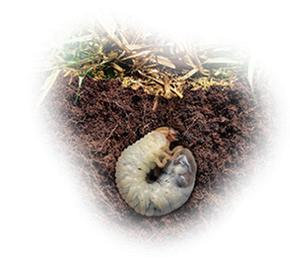
MIX WITH WATER TO USE AS A GROUND SPRAY TO CONTROL TURF GRUBS OR APPLY TO FOLIAGE TO CONTROL ADULT BEETLES

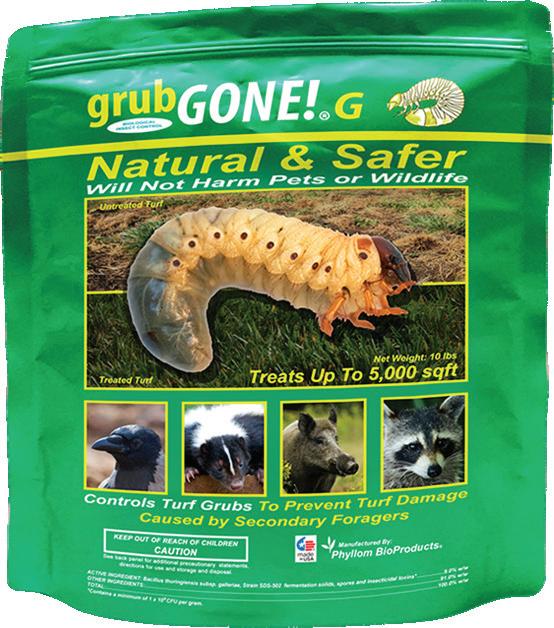
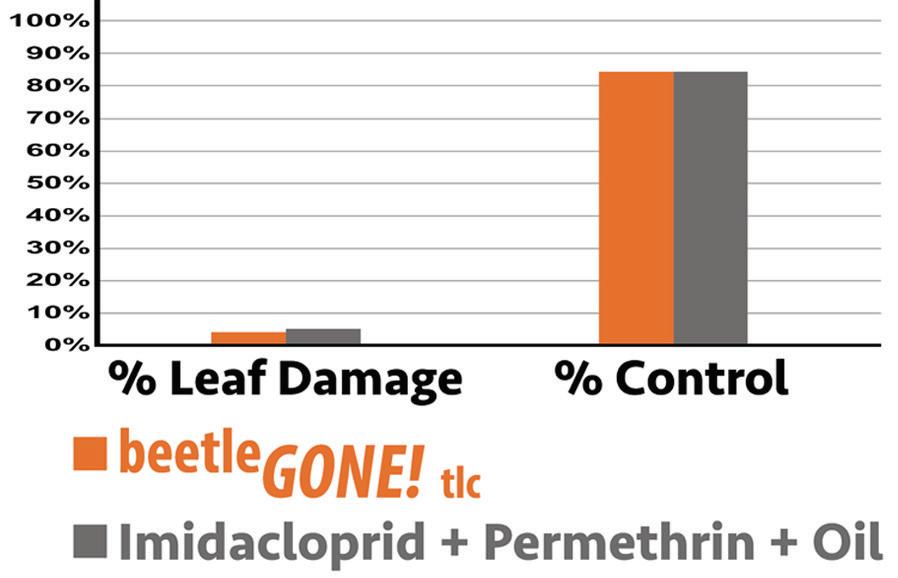
• No need to sacrifice the high performance of leading chemicals for safety.
• Performs at much higher levels than oil, nematode & fungal products.
• This technology is the #1 non-chemical insecticide technology used in agriculture worldwide.


• grubGONE! & beetleGONE! are both used succesfully in IPM programs.
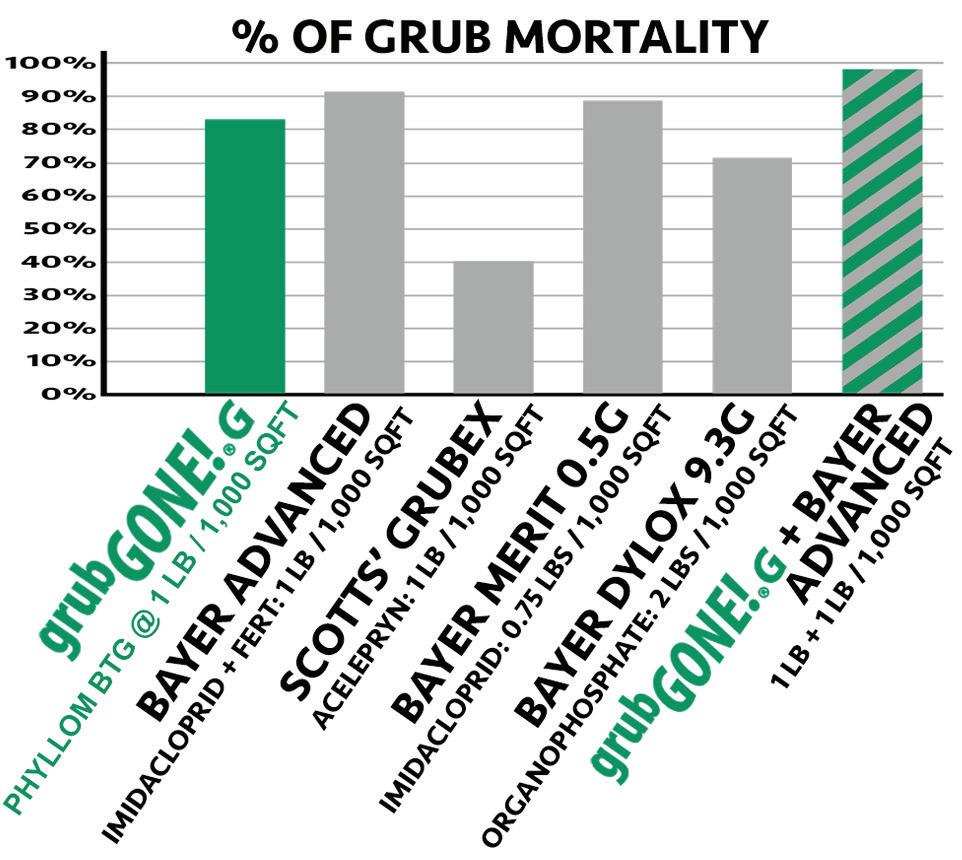


Targeted Beetle, Weevil & Borer Insects: Scarab Grub (Larva),


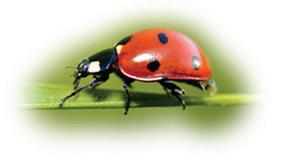
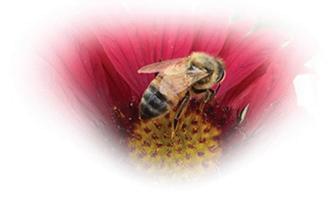



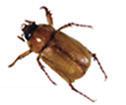

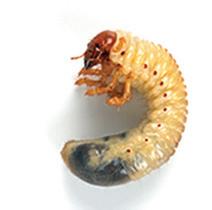
N. Masked Chafer, Asiatic Garden Beetle, Japanese Beetle, Rose Chafer, Oriental Beetle, European Chafer, Green June Beetle, S. Masked Chafer, Emerald Ash Borer, Annual Bluegrass Weevil, Billbugs & more
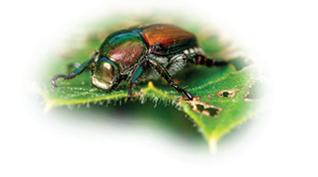

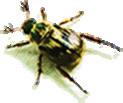
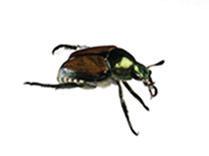
Technical Info: PhyllomBioProducts.com
Sales: Contact a Tom Irwin Inc Client Rep
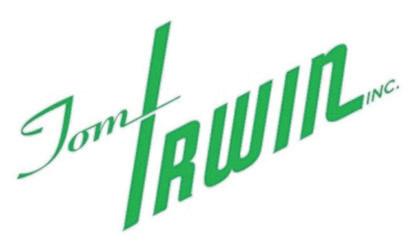


Brian Luccini (MA, RI, NH, ME): brian@tomirwin.com | (781) 799-9450
Chris Kneale (CT, MA, VT): ckneale@tomirwin.com | (860) 539-1516
Scarab Grub Trial
NC State University (2016)
Japanese Beetles on Roses Trial
University of Wisconsin
Tom Barry and Carl Samuelson talk about how they successfully manage their budgets in two very different sports field environments: K-12 Private School and Municipal Parks & Recreation.
In this candid conversation, Tom and Carl draw on years of experience in the private and public sectors. The webinar is jam-packed with valuable advice on data collection, record-keeping, increasing efficiencies, building trust with money managers, and more. You’ll take away forward-thinking insight and practical tips on how to better manage your facility’s budgeting process.
Available on-demand until August 30, 2023. Learn more at NESTMA.org.
Tom Barry, CSFM Grounds Manager • Greens Farms Academy • Westport, CT
Tom Barry’s career encompasses the scope of the sports turf industry including grounds crew, golf course management, and landscape construction – all of which brought him to the position he holds today as Grounds Manager at Greens Farms Academy in Westport, Connecticut.

At Greens Farms, Tom has developed successful, environmentally sensitive management programs for both turf and landscape plants on campus. Most notably, he led the academy to achieve STMA’s Environmental Facility Certificate in 2018. A Certified Sports Field Manager, Tom was named NESTMA’s Sports Turf Manager of the Year in 2020.
For more than 20 years, Carl Samuelson has served as Park Superintendent for the Town of Newtown, Connecticut.
Carl’s drive to raise facility standards through the adoption of best practices, technology and thinking outside the box has given him a broad range of experience to share. His accomplishments in raising standards and sustainability, as well as managing growth to accommodate the needs of the Newtown community are noteworthy.
•
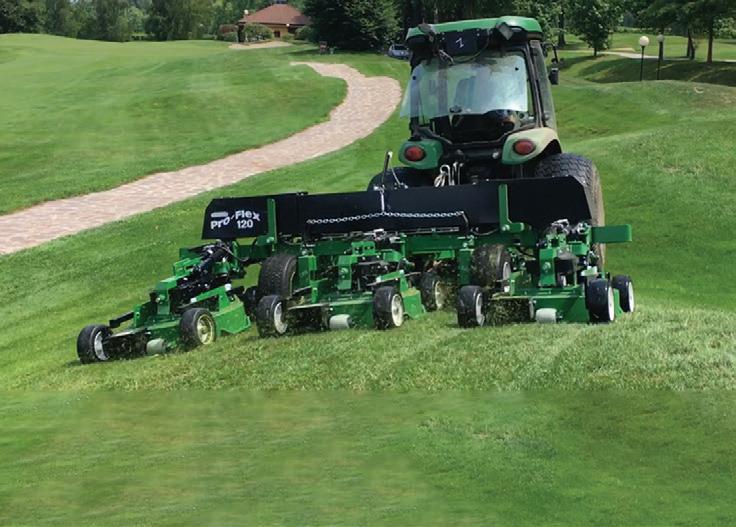

UMass Turf Research Field Day is presented on a biennial basis to highlight the wide range of research projects currently taking place at the UMass Joseph Troll Turf Research Center in South Deerfield, MA as well as on research being conducted at other locations by University of Massachusetts Turf Program faculty, staff, and graduate students.
The UMass Turf Program continues the long tradition of a Research Field Day in South Deerfield on Wednesday, July 19, 2023. Turf professionals and their associates can meet and speak with UMass staff and to view projects underway. The event includes exhibits and numerous industry representatives are featured. All registrants had the opportunity to enjoy continental breakfast and a hearty cookout lunch.
Current UMass research includes studies on the biology and integrated management of turf-damaging diseases and insects, short- and long-term weed management, environmental stress physiology, fertility, drought management, and golf and sports surfaces, as well as a range of National Turfgrass Evaluation Program fine turf trials. •


NESTMA Awards Meeting and Lunch at the NERTC in Providence was a great success! More than 100 members attended to reconnect with friends, celebrate colleagues, and hear about plans that will continue to move the association and the industry forward.


Executive Director, Virginia Wood, gave a rundown of recent NESTMA activities. The list of accomplishments included online learning, communications and connections, Fall Turf Day, scholarships, research support, and most notably, the release of Best Management Practices for Sports Field Managers in New England. Every member at the meeting received their own copy of this valuable publication. Vickie Wallace and the many
members who helped to produce the new BMPs were applauded for this extraordinary effort.
Virginia also called out the hard-working members of the NESTMA board of the directors, who do a great job steering the NESTMA ship, and Commercial Partners were recognized for their steadfast support of the association.
Tom Irwin, Inc. received a special thank you for their exclusive sponsorship of NESTMA’s Awards Meeting and Lunch.
Congratulations to 2023 Sports Turf Manager of the Year, Ed Olsen of the Town of Needham, MA, and Commercial Partner of the Year Ed Downing of Read Custom Soils. •

At Precision Laboratories®, we know that improved water management has a benefit to all areas of your course, not just the playable surfaces. Precip and Precip G distill years of soil hydrology research and proven results for your property.
The result? Better water conservation, optimal soil hydration, and more time to focus on what’s important your course.
BETTER WATER INFILTRATION optimizes irrigation and rain inputs
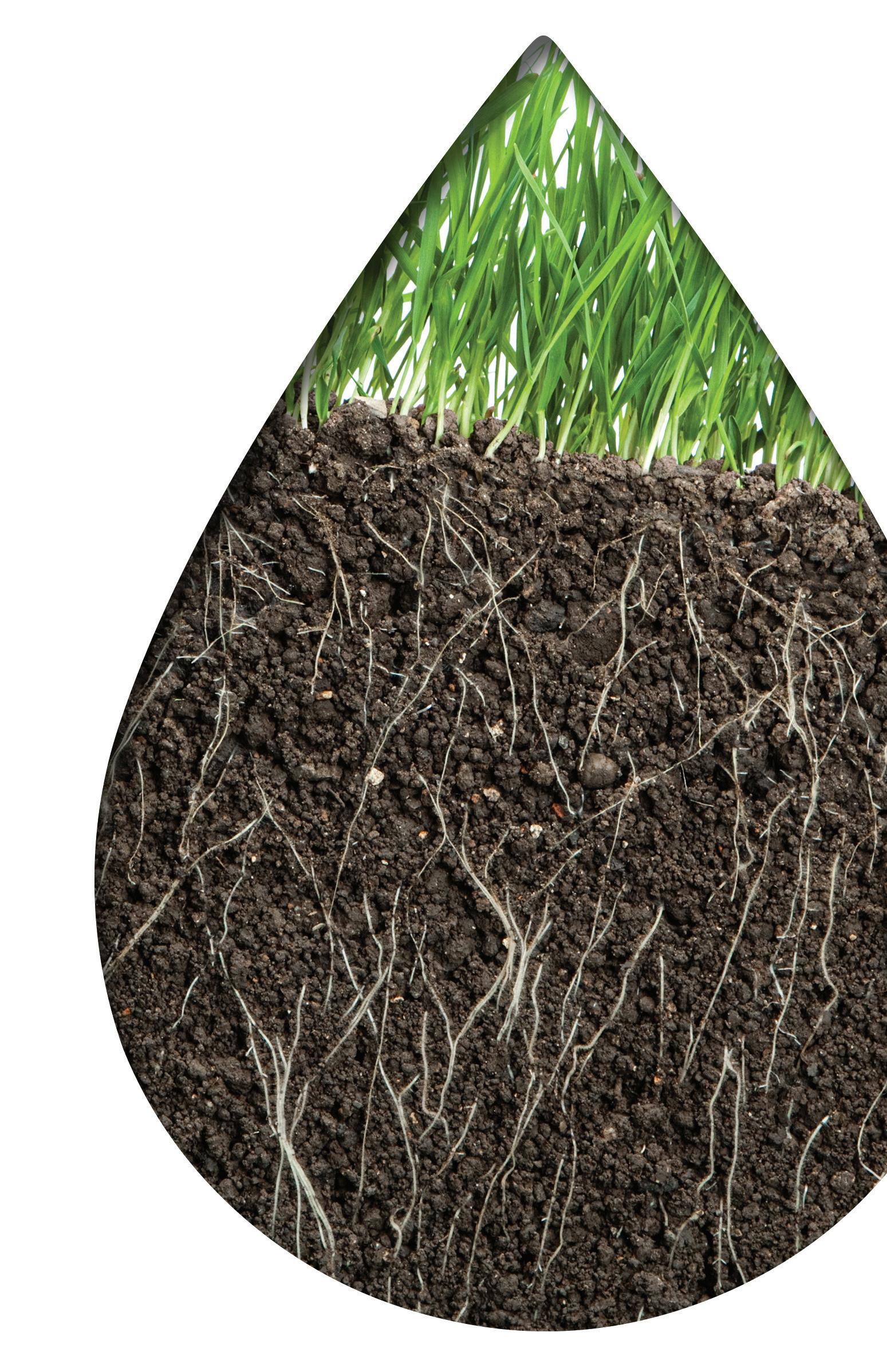
LONGER HYDRATION for water and labor savings over time

AFFORDABLE COST for expanded use in areas like rough, bunker faces, and clubhouse lawns
HYDRATION & INFILTRATION
Learn more on our website





Where did you go to school?
I graduated from UMASS Amherst with a B.A. in History in 1993 and returned to get a B.S. degree in Plant & Soil Science in 1998.
How did you get your start in sports field management?
I was fortunate to meet many UMASS “Stockies” while attending UMASS for my first degree in History. I stayed in touch with many of these friends who had gone on to become successful Golf Course Superintendents. Because of that I decided to go back for another bachelor’s degree at UMASS Amherst in Turfgrass Management.
Where did you go from there?
I took a couple of different Assistant Superintendent Positions while attending school and landed a job down in New York for a few years. Then I returned home to Massachusetts, to take a Superintendent’s position at Spring Valley Country Club in Sharon, MA. From there I did one more stint as a Golf Course Superintendent in Quincy, MA before changing careers. In 2010, I was hired as the Parks & Forestry Superintendent in the Town of Needham, MA where I live with my family.
What do you like best about your current position?
Team building and seeing the pride our staff exhibits in their work. Helping to build visions for the future. We have finished more than 12 major capital field projects here in Needham
over the last 12 years. Seeing a project from concept through to completion. There is nothing more rewarding than building a mutually accepted design and seeing it through to final product. Our most recent example is the Town of Needham Common renovation. This vision started almost 10 years ago and is nearly completed.
Who are your mentors in the sports field management profession?
Golf: Joe Ripka-Thorny Lea, CGCS, Golf Course Superintendent. Joe taught me professionalism and John Adamonis, Spring Valley Country Club, John taught me about work ethic and drive.

Sports Turf: Jack Schmidgal. Jack taught me everything else, especially attention to details, and specification writing.
What’s the best business advice you’ve ever received?
“It is not the critic who counts; not the man who points how the strong man stumbles, or where the doer of deeds could have done them better. The credit belongs to the man who is in the arena, whose face is marred by dust and sweat and blood; who strives valiantly; who errs, who comes short again and again, because there is no effort without error and shortcoming; but who does actually strive to do the deeds; who knows great enthusiasms, the great devotions; who spends himself in a worthy cause; who at the best knows in the end the triumph of high achievement, and who at the worst, if he fails, at least fails while daring greatly, so that his place shall never be with those cold and timid souls who neither know victory nor defeat.” Theodore Roosevelt
Since the beginning of your career, what is the biggest change you’ve seen in the sports field industry?
Improvements in turf quality. This has been accomplished through innovations in machinery and equipment, technology, and with seed. As a result, we are producing much higher-level playing surfaces than ever before.
What’s your favorite / most useful:
Equipment? New Toro 4500. I love to mow. My staff allows me to put final mows on select fields for special events like our annual Memorial Soccer tourney, our 4th of July hosting at Memorial Park, Opening Day for Little League.
Product? Cup cutter allows me to touch, smell and see my turf and soil in its environment.
Technology? Agronomic Planner. Helps me stay organized. Also serves as a great resource and archive of information. If it is not recorded and written down, then who knows that it ever happened?
What is the next game-changer you see on the horizon for the sports field industry?
Now more than ever we need to recruit, retain, train, and develop our staff. We all need to mentor our staff and show them passion, respect, and appreciation of managing and promoting Green Space. Passion grows progress and respect. Respect and progress ingrain gratitude and ownership.
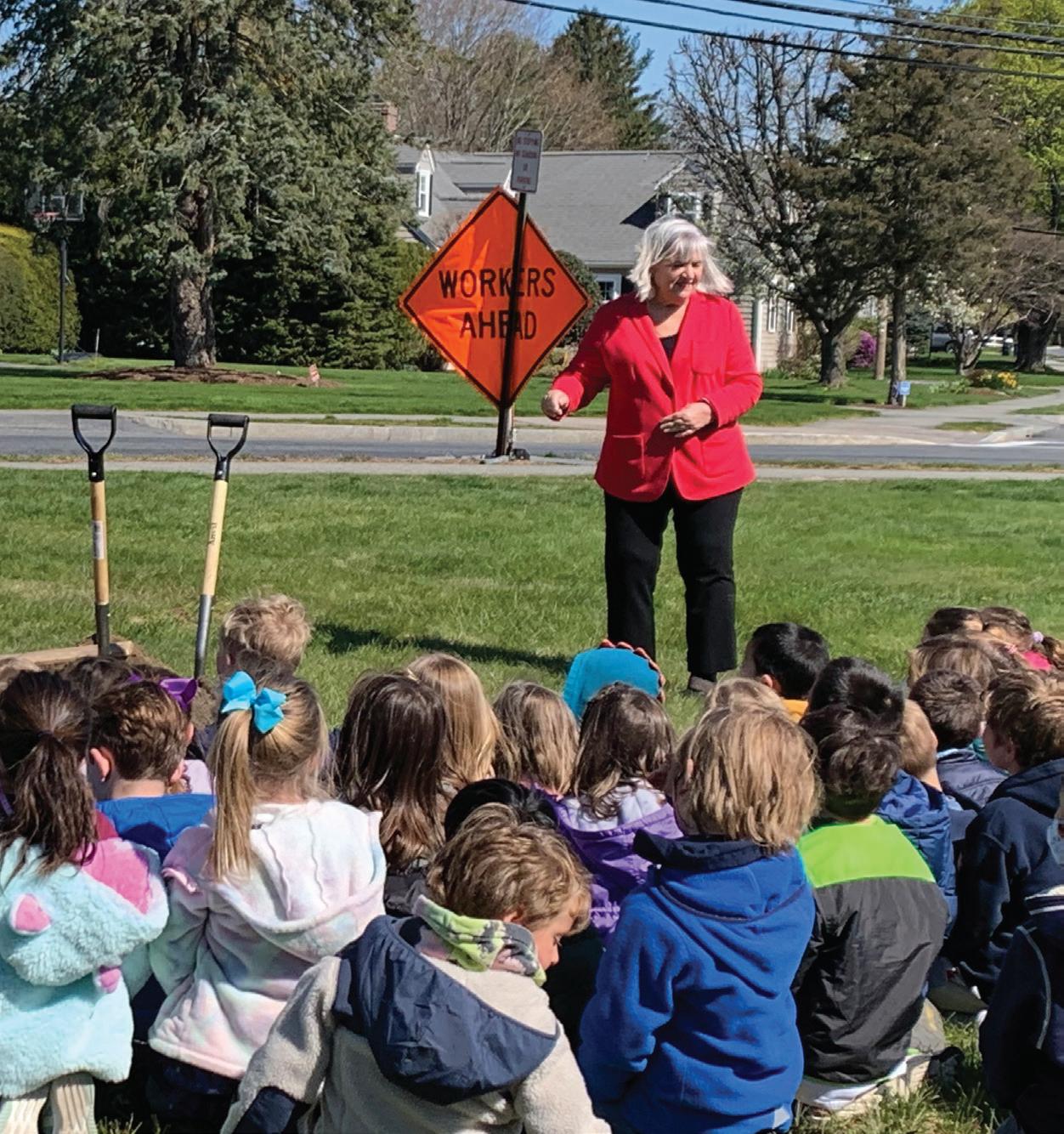
What advice would you share with people starting out in sports field management today?
Network. Don’t be afraid to ask questions. Get to know your colleagues. Over time I have introduced people that I have met to each other and built larger and stronger networks.
Can you share a bit about your family life and / or what you enjoy doing in your free time?

I have been married to my wife Tami for 16 years. We met at Spring Valley Country Club. I was the Golf Course Superintendent and she was the Assistant Golf Pro. It was love at first sight. We have two children, Savannah & Shane. We love taking walks as a family at the Arnold Arboretum. I like playing golf against my wife. Tami gives me two strokes a hole to make it fair. She is a former MA State Golf Amateur Champion, so this is what we have considered fair! Riding bikes with my daughter. Playing basketball, soccer, & hockey with my son. I enjoy doing yard work. This is where I am happiest. And nothing gives me more pleasure than burning in a good mowing pattern!
What have you found most beneficial about being a NESTMA member?
Number one is networking. By doing so I stay in touch with what’s happening in the industry. Connecting with folks at meetings and dinners helps keep me grounded and focused. •

Over the past fifteen years, I have been tasked with interpreting the complexities and science behind the system of synthetic turf. I have spent countless hours looking at fiber, understanding infills, looking at mixes and ratios of infills and have dived into the benefits that shock pads have provided to turf systems. Due to the scrutiny of the system, and like everything in the modern world, we have been bombarded with new products that we evaluate all over again in constant search for the best product that will produce the best results. At times this exploration can be tireless.
A colleague of mine pulled me aside and suggested that I just need to simplify the process. I have been so focused on the science, testing and performance that I lost sight of some of the most basic principles to maintaining the system. I have gotten older and put my career in hyper-drive which has forced me to do everything I can to simplify. My wife and I downsized our house to simplify our lives. I even threw out everything in my old wallet and got a new one so I can carry less. So how do you simplify synthetic turf maintenance? You need to look at what you do, how you do it, and what you need to make it happen.
The principles of synthetic turf maintenance are simple and can be broken down into two simple concepts: lift the fibers and keep the infill at appropriate levels.


Infill is the structure that keeps the turf fibers upright which eliminates premature breakdown. The top of the fiber is the area where athletes interact with the surface. If the fiber is standing up, then the cleat can grab into the surface allowing for cutting and turning. The science and biomechanics behind the interaction of an athlete’s interaction with the surface is complicated, but the concept of keeping infill in the field at levels that allow the field to perform and the turf standing up as it should is simple.
A simple way of making sure that the infill is right is to check infill depths regularly. This can be done with a one or three prong infill depth gauge. Using the gauge allows one to know the depth of infill in millimeters. Monitoring infill depths will allow for an understanding of where infill is migrating to and when additional infill will be needed. Synthetic fibers will breakdown at the area where there is no support for the fiber. The lower the support, the further down the fiber will start to wear out. Highuse areas can quickly wear when attention is not paid to those areas, and breakdown can occur when infill is not added. If you want to keep your field from premature breakdown, keep an infill gauge and check those high use areas.
One of the simplest and most versatile tools we use is a five-gallon bucket. It can carry paint if we are line-striping but is also used for water to wash the machine out. We use it to carry infill out to the field, throw trash into and pick up rocks when we walk around the field, and use it to carry out repair materials. When we are doing a repair or working on the machine it becomes our seat to give us some time off our feet. It’s amazing how much a simple thing can have such a large impact on our daily lives. Sometimes it great to sit back and look at the simplicity of how we can make a big impact. As maintainers of synthetic turf fields, some of the most basic processes have the largest impact. We know that we use complicated methods to care for the fields we maintain, but the addition of simple practices and tools can also have an impact. •
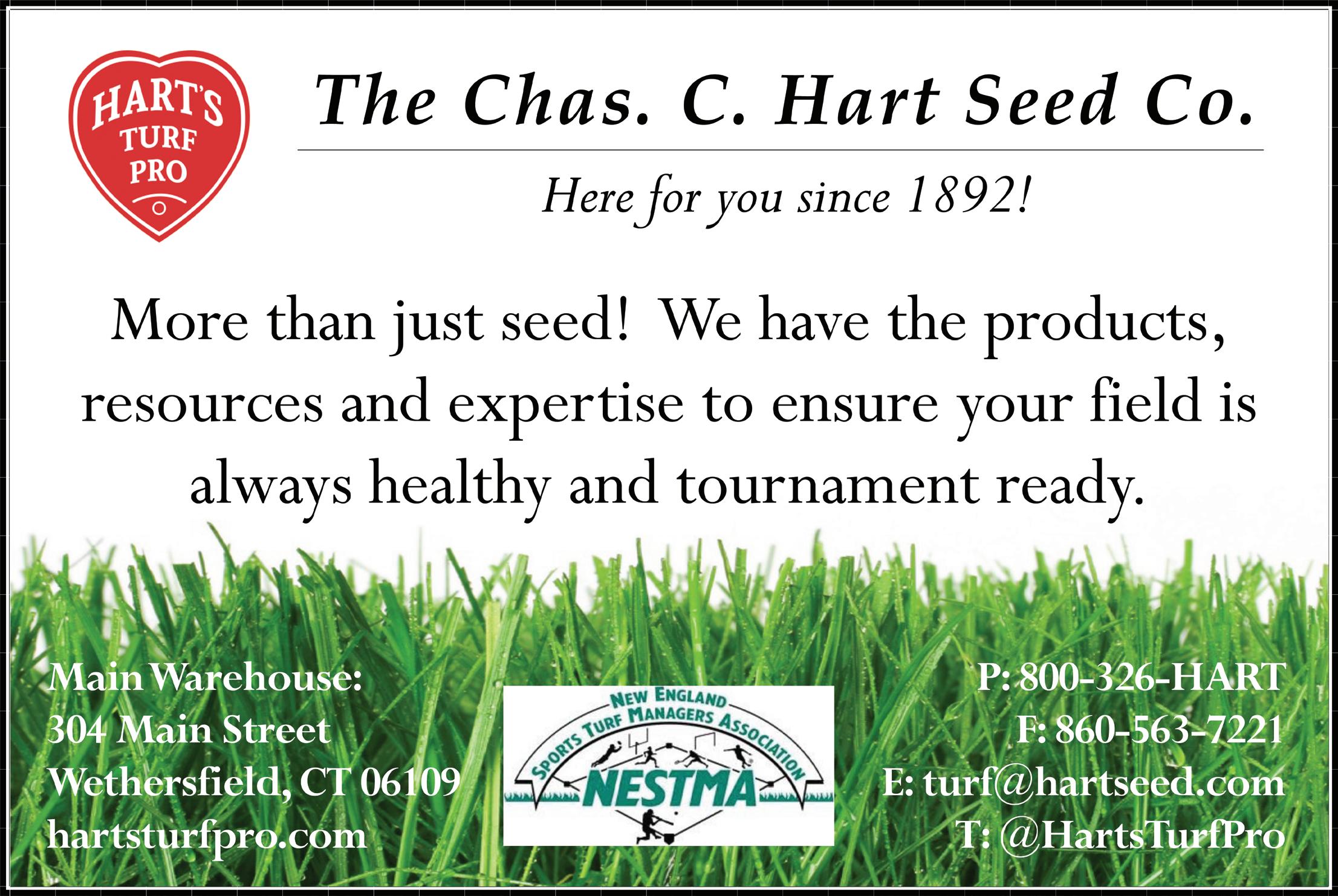

The South Portland, ME city council enacted a synthetic pesticide ban (in 2016) and fertilizer ban (in 2021) on public and private properties. Since 2016, changing our management approach to comply with the regulations, as well as researching and integrating alternative products for both pest management and fertility, has been difficult. Management of crabgrass and grubs has been particularly challenging. The restriction to using only organic fertilizers is also a considerable challenge, particularly in the spring and fall, which are the times of year with the most field usage and greatest need for recovery from wear, but when organic fertilizers are typically less effective due to cool soil temperatures.
30 acres of sports fields; 150 total acres. Sandy loam, high organic content has led to an increase in thatch.
• All our athletic fields are exposed to harsh environmental conditions (e.g., wind, surface water, and mechanical migration of weed seed). The site has no natural barriers surrounding the athletic fields. By September 2019, after three years without the option to use a pre-emergent herbicide, crabgrass populations were high enough to severely impact the playing surface quality of our athletic fields.

• We also faced significant fertility challenges, particularly in the spring and summer of 2022, when the region experienced a cool spring followed by severe drought.
• When soil temperatures are below 50 – 60ºF, turfgrass growth is limited and soil microbes are not active enough to break down organic products and release nutrients that the turfgrass can utilize.
• Even with an in-ground irrigation system in place, the lack of rainfall in summer affected the amount of available soil moisture in the soil profile. Subsequently, microbial activity and the breakdown of organic products was limited, resulting in poor turfgrass growth and suboptimal field conditions going into the busy fall season.
• To better manage crabgrass and grub populations.
• To improve turfgrass recovery during periods of high usage, especially in cool weather, when organic fertilizer products are less effective due to the reduced soil microbial activity.
• On one athletic field that had excessive crabgrass populations, verticutting and mechanical removal were performed in two directions to clip crabgrass plants and encourage the perennial turfgrasses to compete. Even though there was significant removal of clippings, we were still concerned that the weed seed bank would affect field quality the following year. In 2019, we applied for and obtained a waiver to treat the fields in the spring of 2020 with a pre-emergent herbicide.

• The COVID shutdown provided the opportunity to be strategically more aggressive with aeration, overseeding, and topdressing practices (overseeding rates were 2 – 4 lbs./1000 ft. depending on existing turf density; aeration

was performed on each field 1 –2 times, using a combination of hollow and solid tines).

• Fertility requirements are different every year, as they are dictated by weather conditions. The warm spring and fall in 2020 produced ideal conditions to utilize organic products. However, the cool and damp conditions in the spring of 2022, followed by hot and dry conditions in the summer, were not suited to organic fertilizer products. Ground temperatures were not at the optimal range in the spring and the lack of moisture in summer prevented the microorganisms from breaking down the organic products so the turf could uptake nutrients. We obtained a waiver to apply a synthetic fertilizer on two of the 15 irrigated sports fields in fall 2022. This application provided a quick release of nutrients that was immediately available to the turfgrass and promoted a faster recovery from stress while relying solely on the irrigation system.
Crabgrass levels were reduced by the pre-emergent herbicide that was applied in spring 2020. The perennial turfgrasses were once again able to thrive with less competition from crabgrass plants. As of 2022, crabgrass levels are still under our threshold for reapplication for a preemergent herbicide waiver.

The fields that received a synthetic fertilizer application in 2022 rebounded nicely going into the fall season, performed at an acceptable level, and tolerated traffic from heavy play. The fields that received only an organic fertilizer were very slow to respond. They did respond once sufficient rainfall arrived mid-way through September. However, the rebound did not allow for adequate recuperation during the heavy fall play schedules.
The fields’ exposure to weed seed migration creates a difficult scenario for managing crabgrass. Aggressive overseeding and aeration has helped, but we expect that a waiver to apply a pre-emergent herbicide will be necessary every 3 – 4 years.
The fields that received a synthetic fertilizer application were healthier and better able to tolerate wear from the high traffic that the fields experienced.
Any turf management program is a work in progress that will evolve from year to year, whether traditional
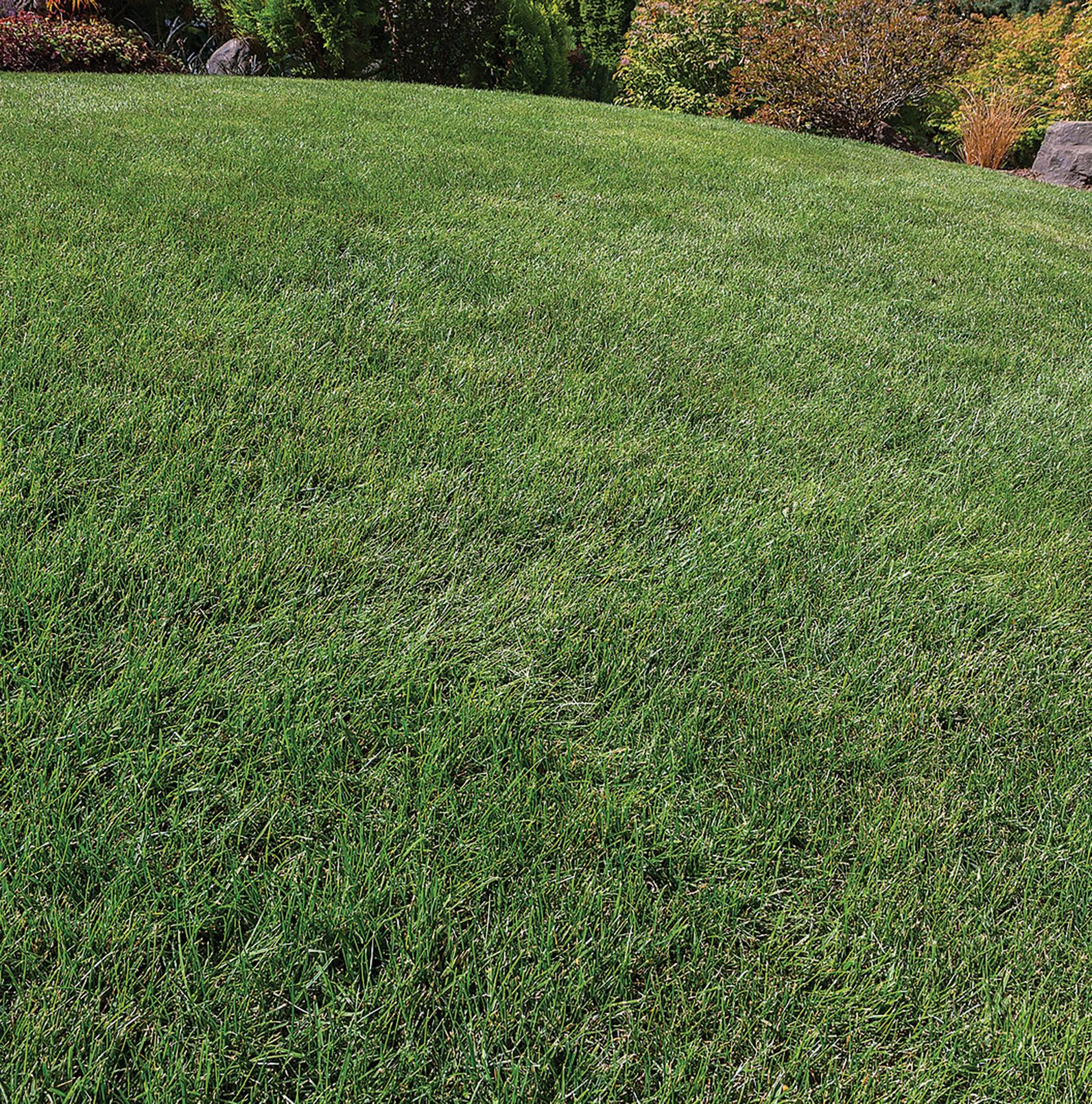
or non-traditional products are used. Restrictions on the use of certain products are a reality across the country. Getting ahead of these challenges is the most important task that a sports manager faces. Recordkeeping will play a pivotal role in how one approaches the hard conversations with policymakers to ensure that athletic fields are safe and playable. •
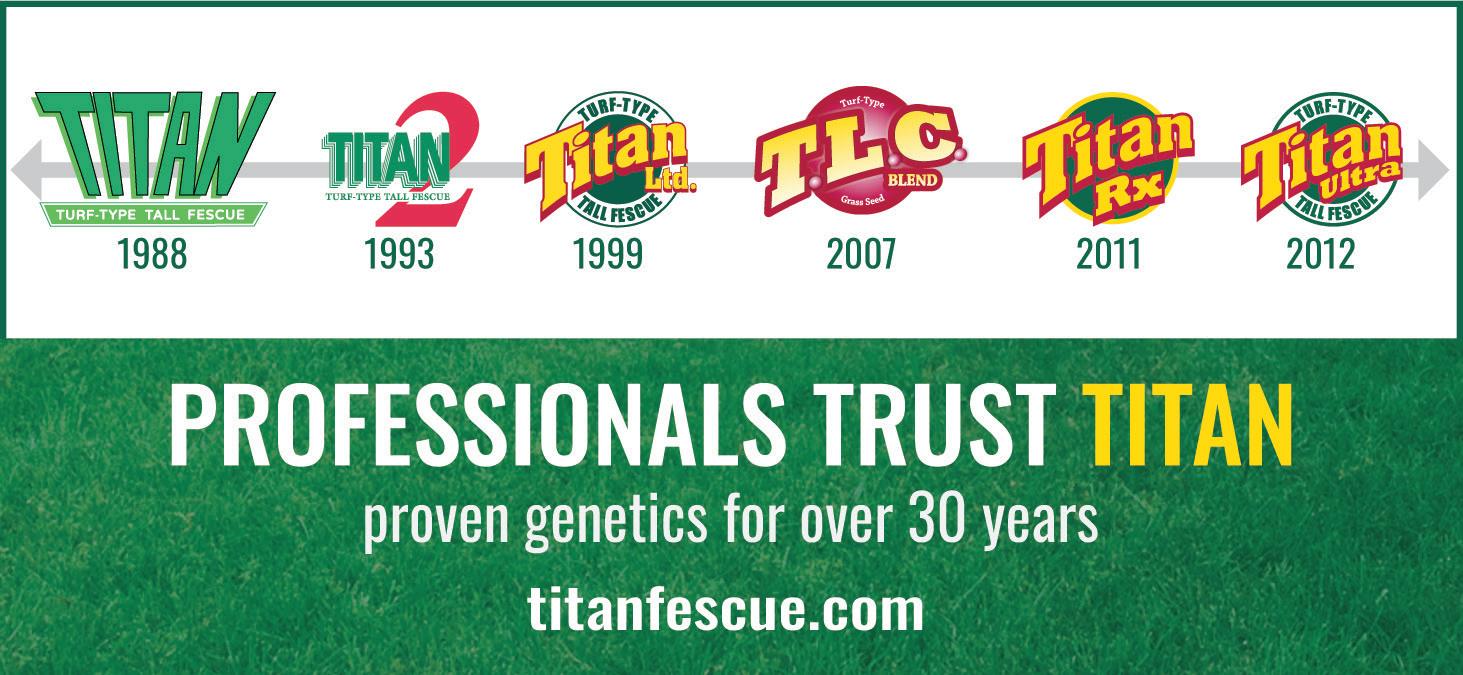
InMarch, a Task Group of hardworking sports turf professionals and academics led by Victoria Wallace at UConn, released a valuable new resource for our industry — Best Management Practices for the Sports Field Manager: A Professional Guide for Environmental Sports Field Management in New England.

This essential reference tool positions New England’s sports field managers as highly trained professionals who make decisions based on scientific fact and experience. Each chapter highlights sound agronomics and the steps involved with athletic field maintenance practices. There are also a series of local case studies on topics like water conservation, dealing with synthetic pesticide bans, fraise mowing for weed control, and more.
Additionally, a complementary webinar is offered to members at no cost. In the webinar Victoria Wallace provides an overview of the BMPs, including “Duty of Care in Sport” to underscore the importance of using this new resource. Viewers will learn how to use the tools and techniques found in the BMPs to document solid environmental practices when communicating with state officials, employers, organizations, and communities.

“I have found that city and town officials, and some decision-makers, are willing to embrace IPM and BMPs. Having a BMP manual that is New England based, developed with solid science, and is peer-reviewed is invaluable.”
Jesse O’Brien, O’Brien Landscape Agronomy, Portland, ME
“I truly feel the BMP guide provides another tool in our toolbox. I recommend that all turf managers take advantage of this great resource.”
Richard Calarco, CSFM, L&C Park Consultants, Town of Hebron, CT (retired)
“The BMPs has been a guide for developing and implementing a cultural program to produce safe and beautiful playing surfaces for our athletes. Additionally, it has been the pillar for creating sustainable initiatives on campus.”
Tom Barry, CFSM, Greens Farms Academy, Westport, CT
In creating these guidelines, many experts contributed their expertise and provided input during the development process. NESTMA is grateful to the following people:
• Victoria Wallace, NESTMA BMP Task Group Chair, University of Connecticut
• Steve Alm, Ph.D., University of Rhode Island
• Ed Ball, Phillips Exeter Academy, New Hampshire
• Tom Barry, CSFM, Greens Farms Academy, Connecticut
• Ryan Bjorn, Gillette Stadium, Massachusetts
• Mike Buras, CSFM, Longwood Cricket Club, Massachusetts
• Brendon Connor, College of the Holy Cross, Massachusetts
NESTMA’s BMPs for New England and case studies are available to current NESTMA members at no charge. Members are invited to visit NESTMA.org to download a digital copy. There are a limited number of printed copies available for $65 (includes shipping & handling). Please contact NESTMA to place your order.
•
• J. Scott Ebdon, Ph.D., University of Massachusetts Amherst
• Arthur Goodhind, MCA, Town of Natick, Massachusetts
• Peter Gorman, Atlantic Golf and Turf, Massachusetts
• Jason Henderson, Ph.D., University of Connecticut
• Jason Lanier, University of Massachusetts Amherst
• Patrick Maguire, RLA, LEED AP, Activitas, Inc., Massachusetts
• Jesse O’Brien, O’Brien Landscape and Agronomy, Maine
• Mary Owen, University of Massachusetts Amherst
• Ben Polimer, Town of Weston, Massachusetts
• Alyssa Siegel-Miles, University of Connecticut
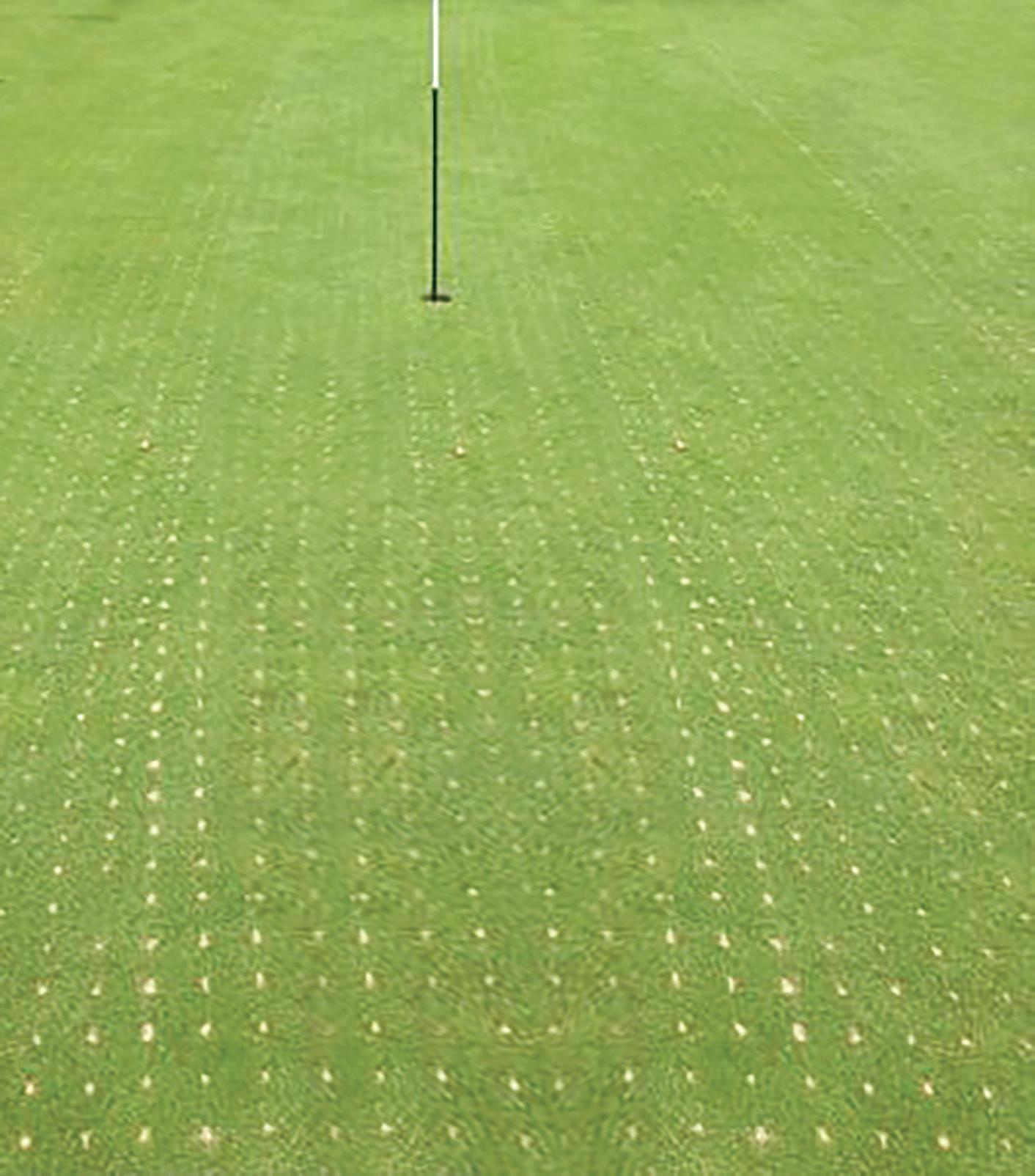
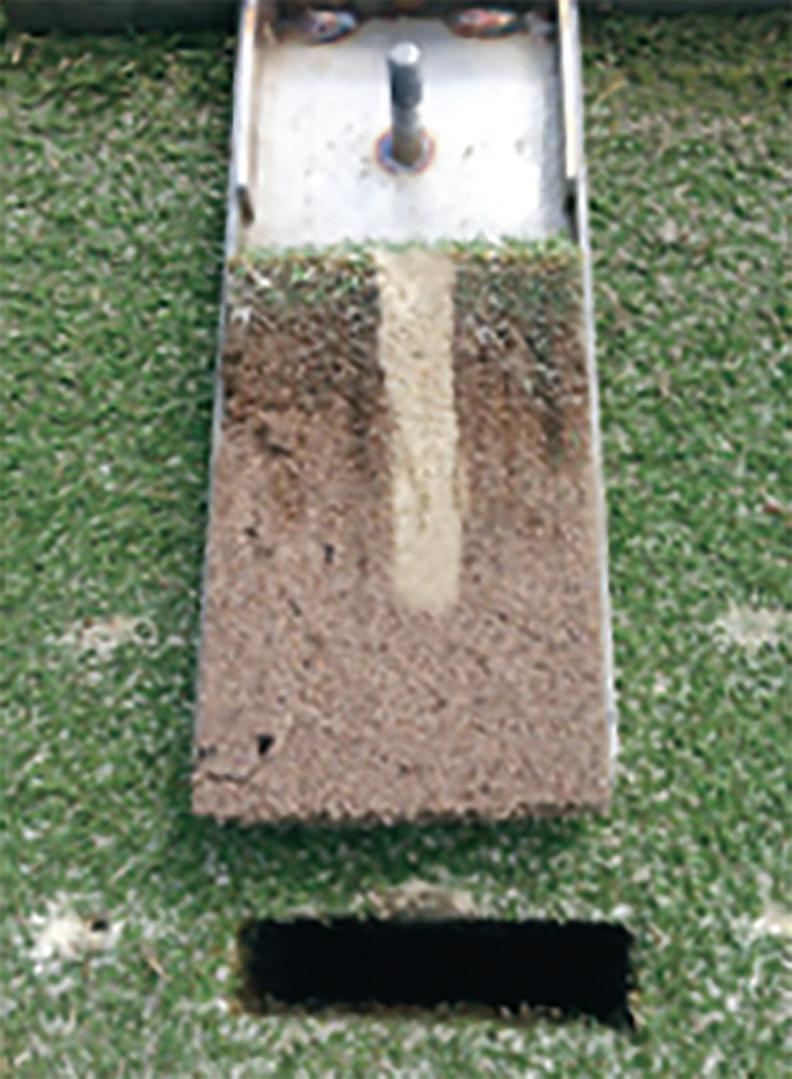
Many leaders seek to hire people who fit their company culture, meaning they choose candidates who share their values, style, or goals. Their theory is that these teams will be more cohesive and aligned to enable performance of key business outcomes. Unfortunately for these leaders, the science shows exactly the opposite is true.

According to a 2015 McKinsey report, diverse management teams are 35% more likely to outperform non-diverse teams in terms of financial performance. One of the reasons for this is that teams which disagree challenge each other to perform at their best. The desire for cohesiveness can in fact limit a team’s ability to obtain performance.

For managers who want to hire the best people, cultural fit may be undermining the entire hiring process. In fact, personality, behavioral, or cultural tests predict on-the-job performance only 20% of the time while giving hiring managers a false sense of security.
One way to know that hiring methods aren’t working to look at the employee turnover rate of an organization. What percentage of employees departed your organization for any reason in the past 12 months? If the answer is 9.2% or higher (the average for all construction companies), then your hiring criteria must be revaluated to outperform the competition.
The best leaders don’t look for a cultural fit, they target candidates who contribute cultural adds. These people have an
identity, viewpoint, or experience which is new and unique to a team and brings a new perspective to an organization. Striving for diversity, as opposed to fit, is the best way to build a highperforming team with lower turnover.
A good talent assessment won’t reveal work styles because the best in each role achieve their results in very different ways. Save the personality and behavioral assessments for building self- and others-awareness of new hires and development. In the hiring process, an assessment of the entrepreneurial talent is what’s needed to succeed.
Finally, managers need to revisit how they interview and move to structured formats where each candidate is given the same questions and answers are scored against an objective guide. These questions should also only be around exhibited behavior in previous experiences or hypothetical situations to determine how someone would perform in a given role. When combined, these strategies dramatically reduce hiring bias and increase team talent and diversity.
If you need more help revamping your hiring process to succeed, check out the courses on GrowTheBench.com or contact us for one-on-one coaching. •
